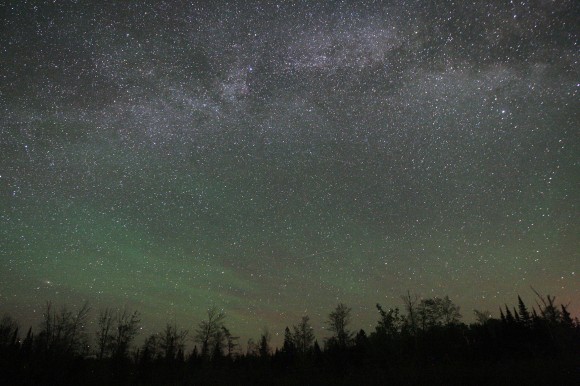I, like everybody I suppose, have read the explanations why the colour of the sky is blue:
... the two most common types of matter present in the atmosphere are gaseous nitrogen and oxygen. These particles are most effective in scattering the higher frequency and shorter wavelength portions of the visible light spectrum. This scattering process involves the absorption of a light wave by an atom followed by reemission of a light wave in a variety of directions. The amount of multidirectional scattering that occurs is dependent upon the frequency of the light. ... So as white light.. from the sun passes through our atmosphere, the high frequencies become scattered by atmospheric particles while the lower frequencies are most likely to pass through the atmosphere without a significant alteration in their direction. This scattering of the higher frequencies of light illuminates the skies with light on the BIV end of the visible spectrum. Compared to blue light, violet light is most easily scattered by atmospheric particles. However, our eyes are more sensitive to light with blue frequencies. Thus, we view the skies as being blue in color.
and why sunsets are red:
... the light that is not scattered is able to pass through our atmosphere and reach our eyes in a rather non-interrupted path. The lower frequencies of sunlight (ROY) tend to reach our eyes as we sight directly at the sun during midday. While sunlight consists of the entire range of frequencies of visible light, not all frequencies are equally intense. In fact, sunlight tends to be most rich with yellow light frequencies. For these reasons, the sun appears yellow during midday due to the direct passage of dominant amounts of yellow frequencies through our atmosphere and to our eyes.
The appearance of the sun changes with the time of day. While it may be yellow during midday, it is often found to gradually turn color as it approaches sunset. This can be explained by light scattering. As the sun approaches the horizon line, sunlight must traverse a greater distance through our atmosphere; this is demonstrated in the diagram below. As the path that sunlight takes through our atmosphere increases in length, ROYGBIV encounters more and more atmospheric particles. This results in the scattering of greater and greater amounts of yellow light. During sunset hours, the light passing through our atmosphere to our eyes tends to be most concentrated with red and orange frequencies of light. For this reason, the sunsets have a reddish-orange hue. The effect of a red sunset becomes more pronounced if the atmosphere contains more and more particles.
Can you explain why the colour of the sky passes from blue to orange/red skipping altogether the whole range of green frequencies?
I have only heard of the legendary 'green, emerald line/ flash'

that appears in particular circumstances
Green flashes are enhanced by mirage, which increase refraction... is more likely to be seen in stable, clear air,... One might expect to see a blue flash, since blue light is refracted most of all, and ... is therefore the very last to disappear below the horizon, but the blue is preferentially scattered out of the line of sight, and the remaining light ends up appearing green
but I have never seen it, nor do I know anybody who ever did.











